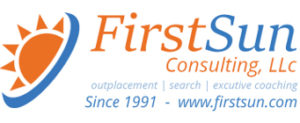Your #Career : 5 Signs That Your Job is Wrong for You…You were Excited to Get the Job but Now you’re Miserable & Dread Monday Mornings. What Happened?
It’s possible you could simply be working at a job that’s a bad fit. Maybe you didn’t realize this was the wrong job for you, or maybe you didn’t care because you were desperate for work, but there comes a time when you need to decide whether it makes sense to stay.
Here are five ways to know you’re in the wrong job.
1. You’re undervalued
If you haven’t received a merit raise or promotion (or at the very least, acknowledgement of your hard work) and you’ve been with the company for a while, you should evaluate whether it is time to take your skills and talent elsewhere. If you feel undervalued by your employer, you’re not alone. Roughly half of employees say they feel undervalued at work, according to the American Psychological Association. Good work should be acknowledged and rewarded. You can start by having a discussion with your boss to see if there are any areas that need to be improved. However, if you have already had this meeting and you have successfully met your target, you may want to consider moving on.
Like this Article ? Share It ! You now can easily enjoy/follow/share Today our Award Winning Articles/Blogs with Now Over 2.5 Million Growing Participates Worldwide in our various Social Media formats below:
FSC LinkedIn Network: (Over 15K+ Members & Growing !) www.linkedin.com/in/frankfsc/en
Facebook: (over 12K) http://www.facebook.com/pages/First-Sun-Consulting-LLC-Outplacement-Services/213542315355343?sk=wall
- Google+: (over 800K)https://plus.google.com/115673713231115398101/posts?hl=en
- Twitter: Follow us @ firstsunllc
educate/collaborate/network….Look forward to your Participation !
Continue of article:
2. There’s a values clash
If you don’t agree with the mission of the company or there are ethical issues, it’s time to reevaluate your work situation. If there are practices at your company that don’t align with your moral values, it’s time to go. KateWendleton, founder of The Five O’Clock Club, says when your values are not symmetrical with your co-workers or managers (for example, there is illegal activity occurring on a regular basis), this is a clear sign you need to leave.
“[fusion_builder_container hundred_percent=”yes” overflow=”visible”][fusion_builder_row][fusion_builder_column type=”1_1″ background_position=”left top” background_color=”” border_size=”” border_color=”” border_style=”solid” spacing=”yes” background_image=”” background_repeat=”no-repeat” padding=”” margin_top=”0px” margin_bottom=”0px” class=”” id=”” animation_type=”” animation_speed=”0.3″ animation_direction=”left” hide_on_mobile=”no” center_content=”no” min_height=”none”][You should leave if] your values don’t match. The people you work with are uncouth, dishonest, focused on getting ahead regardless of legal or moral barriers. They win by cheating,” said Wendleton.
3. You’re not good at your job
Are you doing a job that’s not a good match for your skills simply because you’re trying to pay the bills? One way to tell your job is a poor fit is if it takes you a very long time to complete tasks and you dread every assignment. The job just doesn’t come naturally to you and takes significant effort. Perhaps you were promoted too soon or you were hired for a position you knew was a bad match. Regardless of how you got where you are, it will only be a matter of time before you make a mistake that’s impossible to recover from. Get out now before the decision to leave is made for you.
“Perhaps you’ll realize [your boss] pointing out things in your work that you can/should change, and you can work on changing them. If this happens, let [your boss] know. Otherwise, you’ll realize [he or she] is pointing out things you can’t easily change (or don’t particularly want to change). If this is the case, the best thing you can do is to start looking for other work,” said Alison Green, management expert and author of the Ask a Manager blog.
4. Your career has stalled
If you have reached a point where there is nowhere else to move but out, you should start dusting off that resume. Perhaps your colleagues plan to stay in their current roles until they die or your company is structured in such a way that there are very few opportunities to be promoted. Either way, time to start looking.
“Careers can stall when your company does not have a position for you to grow into. There’s a ‘blocker’ above you—usually your boss—who’s doing a fine job and has no plans to retire, change industries, or move to Toledo…The main culprit is lack of growth; your company, industry, or the economy overall is in a hard place, standing still, or even contracting. In such situations, opportunities for upward mobility are necessarily hard to come by…. If you’re in a blocker situation, you really only have one choice, and it’s to decide how long you’re willing to endure stasis, and we mean, decide. Put an expiration date on your patience. ‘If something doesn’t change within a year, I’m putting out feelers, and within two years, I’m out of here,’ you might conclude,” said Jack Welch, executive chairman of Jack Welch Management Institute.
5. Your work-life balance is nonexistent
If all you do is work, go home, shower, and then do it all over again, it’s time to make a change. Jobs require a certain amount of dedication, but things are out of hand if you’re constantly working and rarely take a vacation despite efforts to bring some balance to your life.
“When your entire life revolves around your job and your work troubles start to follow you home, you have a problem. If you’re overdoing it, you might lose yourself along the way,” said career expert Arthur Joyce.
Follow Sheiresa on Twitter and Facebook.
CheatSheet.com | July 3, 2016 | Sheiresa Ngo
[/fusion_builder_column][/fusion_builder_row][/fusion_builder_container]











